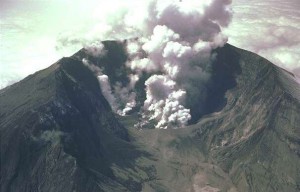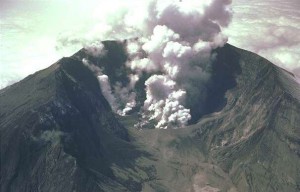 If you’ve ever wanted to make your own version of a volcano that burps and spit all over the place, then this is the experiment for you. We used to teach kids how to make genuine Fire & Flame volcanoes, but parents weren’t too happy about the shower of sparks that hit the ceiling and fireballs that shot out of the thing… so we’ve toned it down a bit to focus more on the lava flow.
If you’ve ever wanted to make your own version of a volcano that burps and spit all over the place, then this is the experiment for you. We used to teach kids how to make genuine Fire & Flame volcanoes, but parents weren’t too happy about the shower of sparks that hit the ceiling and fireballs that shot out of the thing… so we’ve toned it down a bit to focus more on the lava flow.
[am4show have=’p8;p9;p73;p101;’ guest_error=’Guest error message’ user_error=’User error message’ ]
FIRST STEP: Make the volcano.
The first thing to do is mix up your own volcano dough. You can choose from the following two mixtures. The Standard Volcano Dough is akin to play dough; the Earthy Volcano Dough looks more like the real thing. Either way, you’ll need a few days on the shelf or a half-hour in a low-temperature oven to bake it dry. Alternatively, you can use a slab of clay for the dough.
- Standard Volcano Dough Mix together 6 cups flour, 2 cups salt, ½ cup vegetable oil, and 2 cups warm water. The resulting mixture should be firm but smooth. Stand a water or soda bottle in a roasting pan and mold the dough around it into a volcano shape.
- Earthy Volcano Dough Mix 2½ cups flour, 2½ cups dirt, 1 cup sand, and 1½ cups salt. Add water by the cup until the mixture sticks together. Build the volcano around an empty water bottle on a disposable turkey-style roasting pan. It will dry in two days if you have the time, but why wait? You can erupt when wet if the mixture is stiff enough! (And if it’s not, add more flour until it is.)
SECOND STEP: Create the reaction.
- Soda Volcanoes Fill the bottle most of the way with warm water and a bit of red food coloring. Add a splash of liquid soap and ¼ cup baking soda. Stir gently. When ready, add vinegar in a steady stream and watch that lava flow.
- Air Pressure Sulfur Volcanoes Wrap the volcano dough around an 18” piece of clear, flexible tubing. Shape the dough into a volcano and place in a disposable roasting pan. Push and pull the tube from the bottom until the other end of the tube is just below the volcano tip. If you clog the ends of the tubing with clay, just trim away the clog with scissors. Using your fingers, shape the inside top of the volcano to resemble a small paper cup. Your solution needs a chamber to mix and grow in before overflowing down the mountain. The tube goes at the bottom of the clay-cup space. Be sure the volcano is SEALED to the cookie sheet at the bottom. You won’t want the solution running out of the bottom of the volcano instead of popping out the top!
-
- Make your chemical reactants.
- Solution 1: Fill one bucket halfway with warm water and add 1 to 2 cups baking soda. Add 1 cup of liquid dish soap and stir very gently so you don’t make too many bubbles.
- Make your chemical reactants.
-
-
- Solution 2: Fill a second bucket halfway with water and add 1 cup of aluminum sulfate (also called alum; find this in the gardening section of the hardware store or check the spice section of the grocery store). Add red food coloring and stir.
-
-
-
- Putting it all together: Count ONE (and pour in Solution 1) … TWO (inhale air only!) …… and THREE (pour in Solution 2 as you put your lips to the tube from the bottom of the volcano and puff as hard as you can!) Lava should not only flow but burp and spit all over the place!
-
Download Student Worksheet & Exercises
Exercises
- How is this activity similar to the volcanoes on Mars?
- What gas is produced with this reaction?
- Which planets have volcanoes?
[/am4show]


I am sorry I didn’t have a chance to make that video when we were doing the volcano series in a live workshop! I’ll put it on our video shoot list for the future. In the meantime, is there something specific I can answer for you?
Hi Aurora!
I’m intersted in doing this experiment but the instructions are a bit too vague. Can you please make a video showing us how to make the volcano? Or go into more detail on how to make it? Drawings or sketches might help too?
Thanks!
Sadly, this is one of the very few experiments that doesn’t have a video. The main reason is that when we took video of this one, the camera got soaked and we didn’t get a chance to reshoot and make a new video. 🙂 Yet…!!
The main thing to keep in mind is that you’re making two solutions that react quickly with each other. It’s really similar to the Dinosaur Toothpaste experiment, which does have a video.
Anyone have video of doing the air pressure sulfur volcano? I’m not sure I’m getting it from the written instructions.
WOW! My 5 & 9 yr old LOVES this project. This is what my 9yr old girl wants to share with you- she wants to type it herself: That is totally awesome! it totally rock!. you are awesome for sharing with us. THANK U
Yup – those should work fine.
The standard volcano dough calls for vegetable oil, can we use olive oil or corn oil?
No prob Aurora, we wouldn’t want to loose you, lol. 🙂
I really wish I could… the only way I can give those out now is if you see me in a live workshop so I can show you how to do it safely. Too many people were sharing the private email info I was sending as a courtesy. I don’t want you to lose any eyebrows, or worse! So, sadly, now I am not able to send out instructions anymore if I want be able to continue teaching science!
My husband and I are interested in the “other” volcano instructions as well. Please email them to me. 🙂
I’m a parent who is also interested in the genuine fire and flame volcano instructions. Would someone email them to me, please?
Hmmm… I know you are interested, but I don’t think your parents would be too thrilled if I taught you how to shoot fireballs inside the house. This isn’t one I can post to the website – I am sorry!
Hello, I am very interested in the volcano some parents werent happy about could you send me the information
Hi,
my boys and I are currently learning about volcanoes during our ‘natural disasters’ theme unit. My husband and I would very much like to build the real explosive style volcano with our boys. Could you please send me the instructions for the non- toned down version.
Thanks Bron
You mentioned the following: “We used to teach kids how to make genuine Fire & Flame volcanoes, but parents weren’t too happy about the shower of sparks that hit the ceiling and fireballs that shot out of the thing… so we’ve toned it down a bit to focus more on the lava flow.”
Would you be willing to send parents the directions to make genuine Fire and flame volcano– I think my child would like to see this (and I would too. 🙂 )